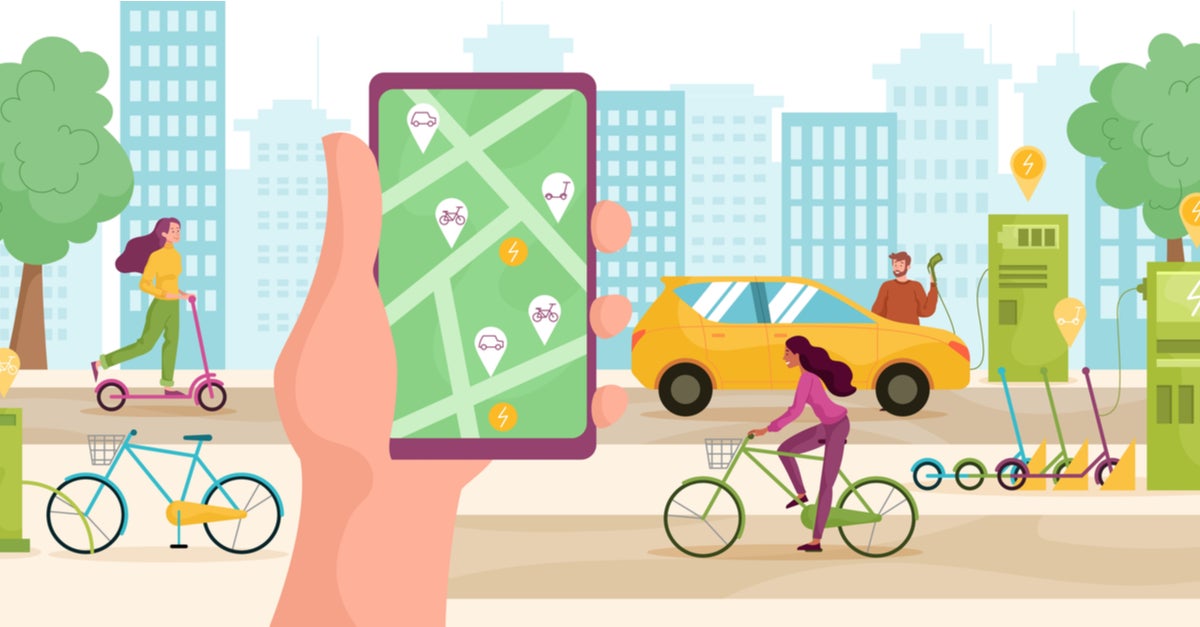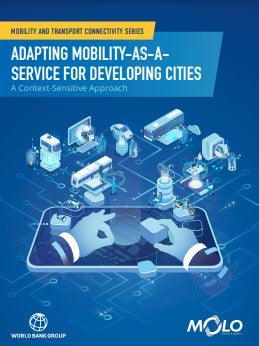 Developing cities need an organizing framework for integrating multiple mobility options and shaping how they can work together to provide a more seamless travel experience and support broader development outcomes. Photo: © mentalmind/Shutterstock
Developing cities need an organizing framework for integrating multiple mobility options and shaping how they can work together to provide a more seamless travel experience and support broader development outcomes. Photo: © mentalmind/Shutterstock
People living in cities have more mobility options than ever before. In addition to ‘traditional’ travel modes such as walking, biking, public transit (both formal and informal), and taxi, a new wave of innovative, private sector-led technology-enabled services—like ridesourcing, car-sharing, bike-sharing, and scooter-sharing—are creating an increasingly diverse urban transport landscape. These services are also becoming more common in low- and middle-income countries, where they join an already complex and only semi-planned system of transport modes, often provided by fragmented, undercapitalized, and underregulated private providers.
While expanding travel choices, this complexity and fragmentation often comes at a cost to cities and their residents:
- For cities, lack of integration among different mobility services can create overlaps and counterproductive competition in the market, with an adverse impact on safety, comfort, and environmental and operational efficiency. In addition, these chaotic, uncoordinated urban transport markets tend to leave many users behind, especially the poorest and most vulnerable.
- For travelers, choosing the right option often requires gathering and comparing (often incomplete) information from different sources, purchasing separate tickets or subscriptions for different stages of the journey, etc.—just for a single trip. When travelers bear the full cost of planning, booking, paying for, and navigating multiple modes, it’s no wonder that they default to private vehicles that provide door-to-door service without the need for multiple, multi-modal transfers—even when this option comes at a high monetary and environmental cost.
Therefore, developing cities need an organizing framework for integrating multiple mobility options and shaping how they can work together to provide a more seamless travel experience and support broader development outcomes. Our new report, Adapting Mobility-as-a-Service for Developing Cities: A Context-Sensitive Approach, demonstrates how the concept of Mobility-as-a-Service (MaaS) can provide this framework in the context of developing cities.
While there are multiple definitions of MaaS, most share a common vision to upend the need for ownership (of a car, motorcycle, or other mobility modes), and instead empower users to access the most optimal mode (or modes) of travel on a trip-by-trip basis.
To achieve this, MaaS provides a simplifying link between users and mobility services, often via a technology-enabled platform such as a smartphone app (see Figure). MaaS is a single interface where users can plan, book, and pay for a wide range of mobility services to meet any travel need. This transfers the burden of integrating multimodal travel from the traveler to the MaaS provider, thus minimizing the inefficiencies and additional costs of users having to navigating between a myriad of fragmented transport services.
For cities, this provides a new opportunity for planning holistic urban mobility systems rather than regulating each mobility service independently. To reap the greatest benefits, city governments must quickly equip themselves to (1) understand the challenges and opportunities of multimodal integration in an increasingly data- and technology-driven mobility market and (2) create a governance and regulatory framework that provides clear signals for how the transport system should evolve to support broader social, environmental, and economic goals.
To achieve this, the public sector must create the right enabling environment for information exchange and create a level playing field for all modes and operators. A MaaS governance model must be outcomes- and goals-oriented so that policies such as pricing and space allocation can apply across modes but incentivize the most efficient and sustainable options. This will require the public sector to act as a facilitator and will rely on the development of analytical capacity, flexibility to try new models, and willingness to reform the regulatory environment.
With the right visioning from the public sector, the implementation of MaaS could catalyze efforts to expand inclusive access and bridge the digital divide in emerging economies. On the other hand, without government leadership, MaaS’s reliance on technology could exacerbate mobility and digital equity issues. Government intervention will be crucial in shaping MaaS to achieve sustainable urban development goals such as access, social inclusion, and climate action. To make a meaningful and positive impact in developing cities, MaaS must meet the needs of all urban travelers, not just the higher-income users of current technology-enabled mobility services. Here again, the public sector can play an important part by implementing policies and regulations that will help improve the affordability of MaaS and expand its coverage. Furthermore, while emerging economies may lag in the deployment of the digital and financial technologies that underpin MaaS, its implementation could leverage innovations in emerging markets such as mobile payments and super apps to help expand access.
RELATED
Report: Adapting Mobility-as-a-Service for Developing Cities: A Context-Sensitive Approach.




Join the Conversation